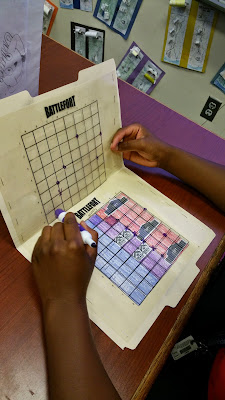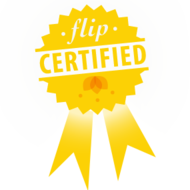As in the Game of Life activity, it can cut down on lots of direction and instructional time to use familiar games to support class concepts. This way, many if not all of the students will already know the rules of the game and can simply apply it to the new context without long explanations of procedures that can be difficult for non-auditory learners and those with attention problems.
In order to support our study of the French and Indian War, we played our own iteration of the classic game Battleship. We substituted a land dispute for naval battle and placed forts and settlements in place of submarines and bombers.
The students designed their own boards based on the disputed territory of the French and Indian War and this was really intended to be the key "takeaway" of the game. I wanted the students to remember that these land claims in the Ohio River valley and Appalachian region were at the root of the conflict. Students also had to play the role of either Britain or France and place their forts and settlements according to the territories.
In order to play the game, each student received a grid with three cut-out forts and two settlements. Students should start in the top left corner and color in 25 blue squares to represent French territory. They can choose any 25 square, but they must all be contiguous. The same should be repeated with red squares starting the bottom right corner for British territory. Finally, disputed territory, or the 14 leftover squares in the middle area somewhere, will be colored in purple.
When students' boards are completely colored in, they may cut out the forts and settlements, then place them anywhere in their own country's territory or in the disputed territory. They cannot place forts or settlements in the other country's territory. Now they are ready to play.
Beforehand, I had prepared the game boards using some manila file folders, transparency film, and a stapler. For each student or board, print two copies of the labeled grid, shown below, on transparency film. Staple one copy to each side on the inside of the folder on the left and right edges only. This way, students can slide their boards in and out of the pocket. This is an inexpensive and easy way to to simulate a Battleship board.
When students are ready to play, their prepared grids should slide under the transparency. They can use dry erase markers to mark hits and misses with Xs and Os. I find that it takes students about 15-20 minutes to play one round and during one class period, we have time to switch players and play a second round.
Thursday, May 21, 2015
Subscribe to:
Comments (Atom)











